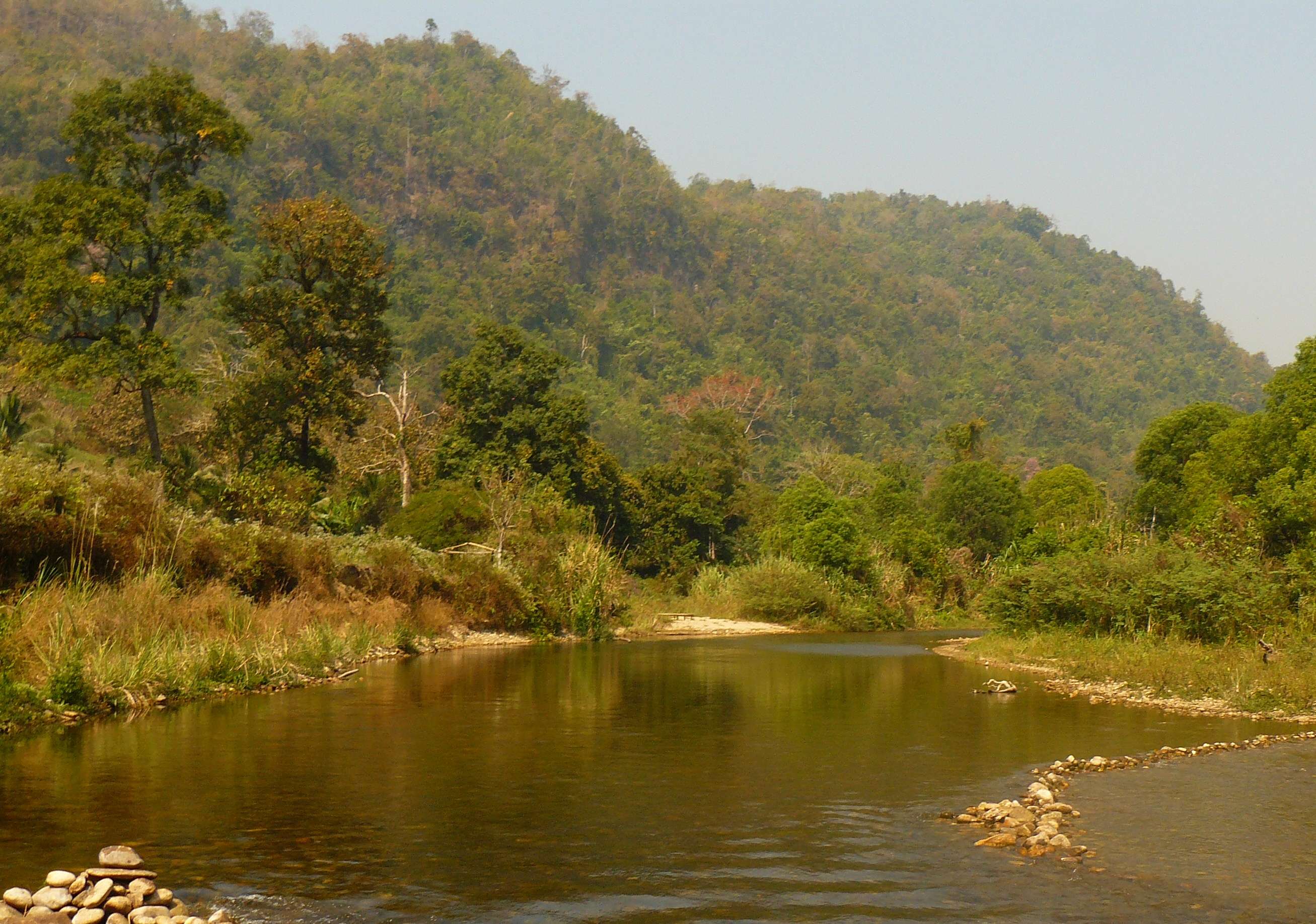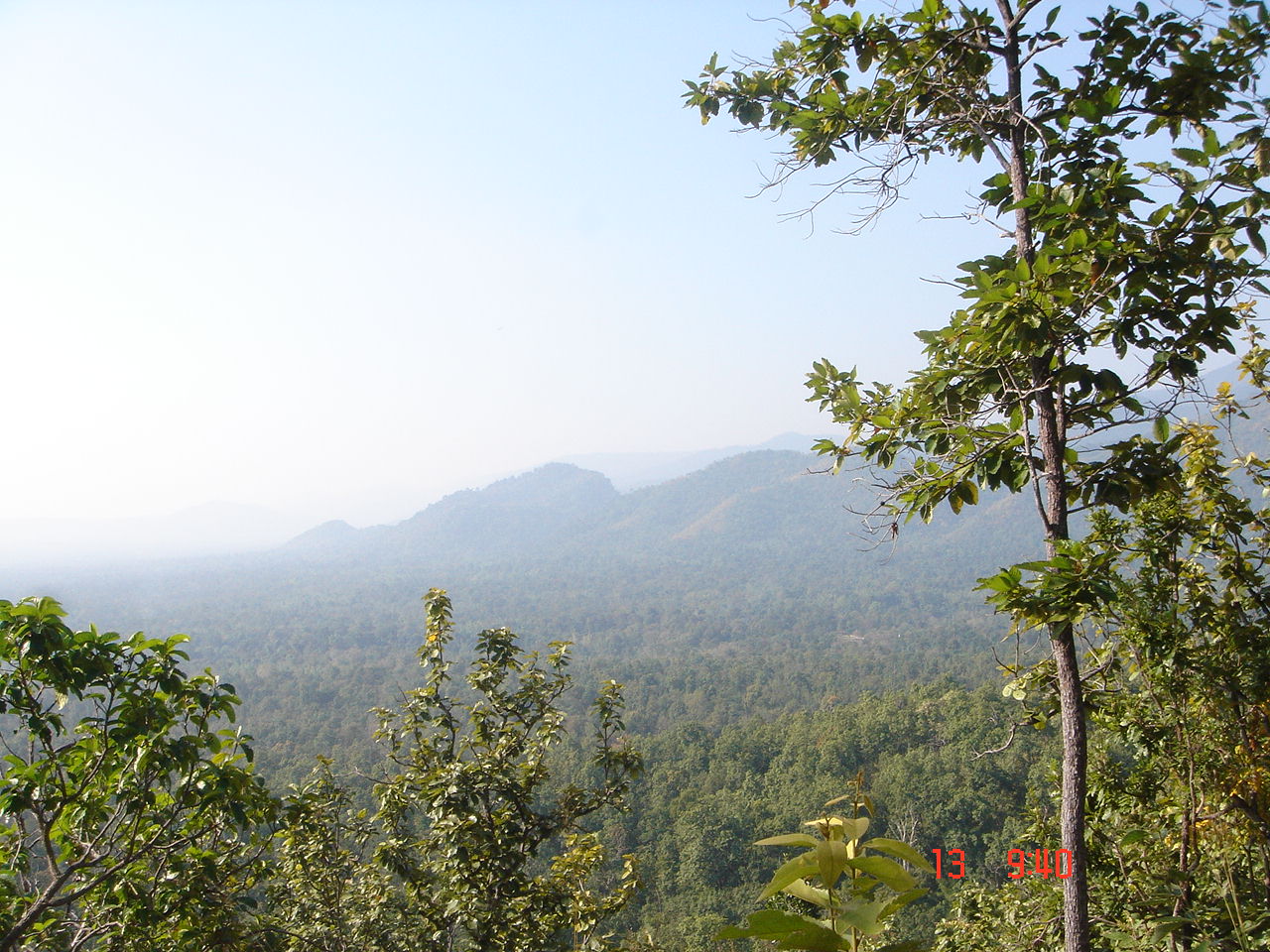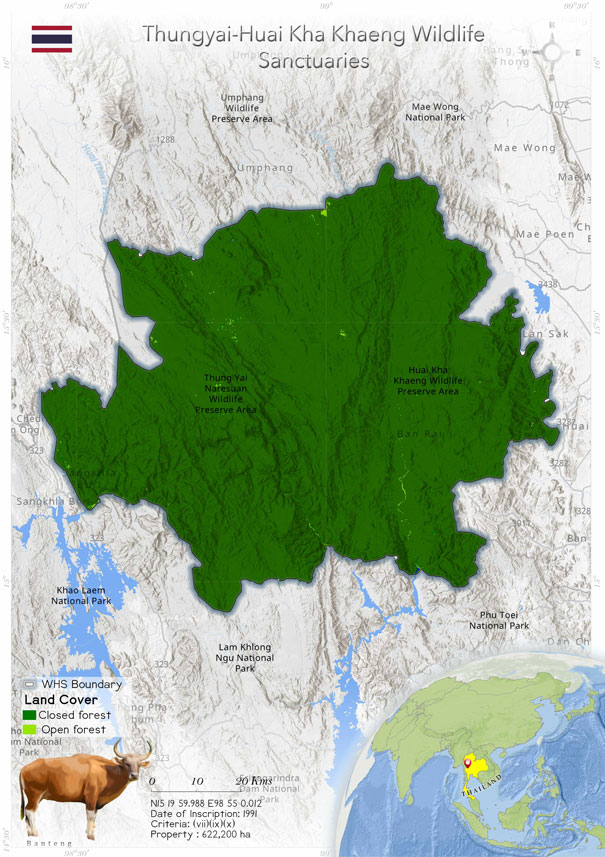
Thungyai-Huai Kha Khaeng Wildlife Sanctuaries
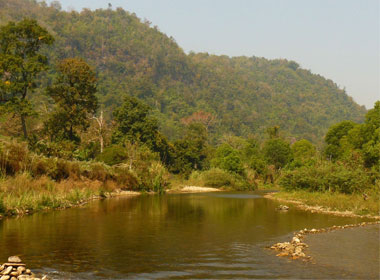 The Thung Yai-Huai Khaeng Wildlife Sanctuaries entwined in three provinces of western Thailand, Uthai Thani, Tak, and Kanchanaburi, makes the site one of the largest heritage property in Southeast Asia. The property comprises of two wildlife sanctuaries- Thung Yai Naresuan and Huai Kha Khang. There are four major types of forest covers- dry evergreen forests, dry dipterocarp, mixed deciduous and savannah grassland. The landscape also holds aesthetic value with the presence of steep sided valleys, mountain peaks, tributary streams and waterfalls. The fauna composition is extremely diverse with high endemism, from small-sized insectivorous bat to the large Asian elephants and tiger. IUCN in its recent 2020 assessment cycle evaluated the world heritage site regarding any potential threats. It was brought to notice that due to a much longer dry season (November to April), there has been frequent occurrences of fires. Anthropogenic activities such as burning of farmlands to clear for agriculture also adds to the cause. Poaching of the Asian elephants that are native to Thailand is yet another major concern which is been looked into with utmost importance.
The Thung Yai-Huai Khaeng Wildlife Sanctuaries entwined in three provinces of western Thailand, Uthai Thani, Tak, and Kanchanaburi, makes the site one of the largest heritage property in Southeast Asia. The property comprises of two wildlife sanctuaries- Thung Yai Naresuan and Huai Kha Khang. There are four major types of forest covers- dry evergreen forests, dry dipterocarp, mixed deciduous and savannah grassland. The landscape also holds aesthetic value with the presence of steep sided valleys, mountain peaks, tributary streams and waterfalls. The fauna composition is extremely diverse with high endemism, from small-sized insectivorous bat to the large Asian elephants and tiger. IUCN in its recent 2020 assessment cycle evaluated the world heritage site regarding any potential threats. It was brought to notice that due to a much longer dry season (November to April), there has been frequent occurrences of fires. Anthropogenic activities such as burning of farmlands to clear for agriculture also adds to the cause. Poaching of the Asian elephants that are native to Thailand is yet another major concern which is been looked into with utmost importance.
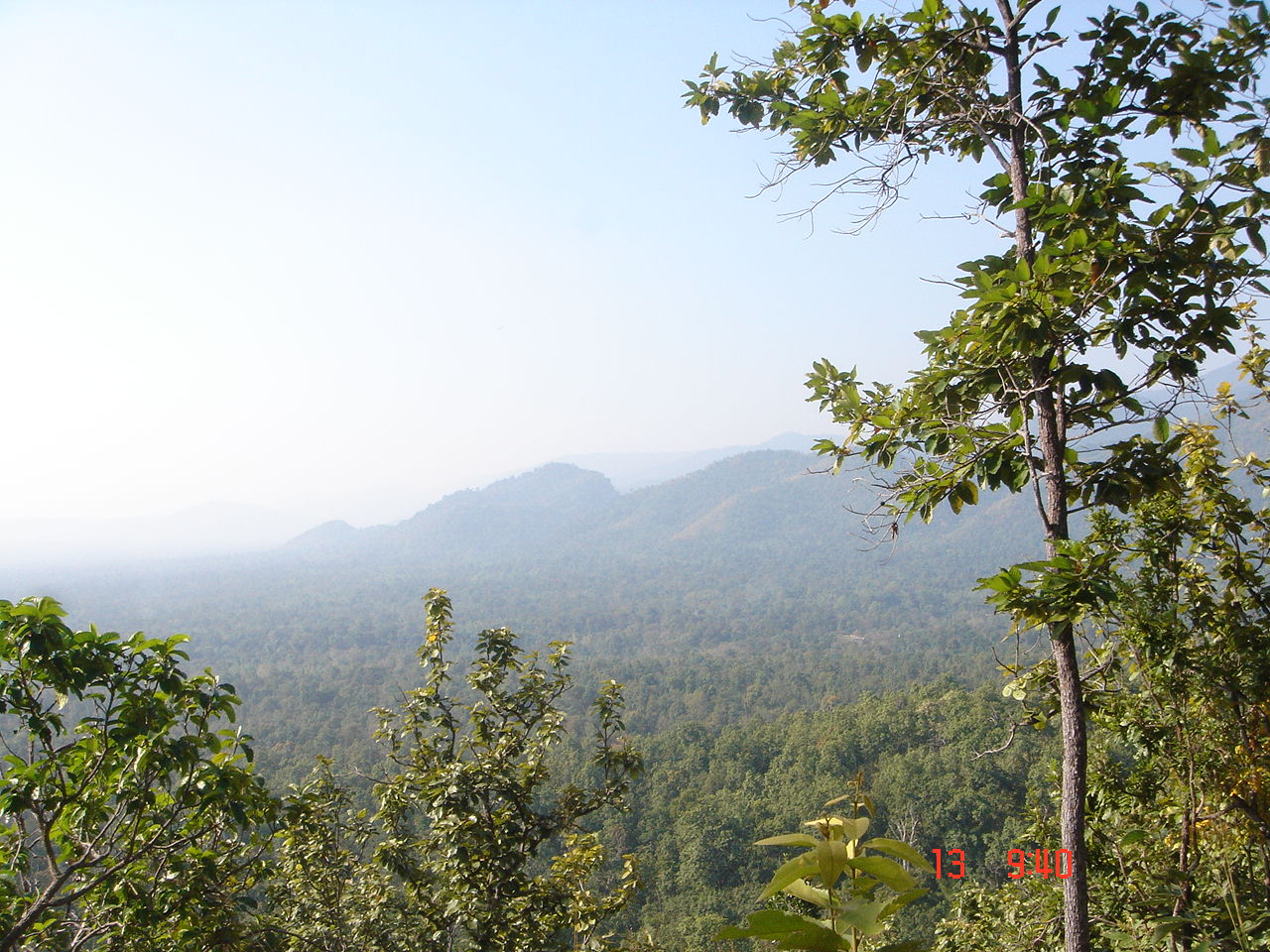 Thung Yai-Huai Khaeng Wildlife Sanctuaries is a world heritage property, inscribed in 1991. The property is an amalgam of two wildlife sanctuaries-Thung Yai Naresuan and Huai Kha Khang (established as sanctuaries in 1972 and 1974, respectively). Located in Uthai Thani, Tak, and Kanchanaburi provinces of Western Thailand, the property is one of the largest conservation areas in Mainland Southeast Asia, encompassing over 622,200 ha (UNESCO whc.unesco.org). Huai Kha Khaeng wildlife sanctuary is the major part of the complex, holding over 60,000 ha of Thailand’s Western Forest complex (UNESCO whc.unesco.org). The boundary of the forest complex and heritage property lies alongside that of neighbouring country, Myanmar. There are two integral river systems, Upper Quae Yai and Huai Kha Khaeng (Robinson et al. 1995) whose watersheds are largely encompassed by the properties boundaries.
The Thungyai-Huai Kha Khang wildlife sanctuaries exhibit four major types of habitats, such as dry evergreen forests, dry dipterocarp, mixed deciduous (WEFCOM 2004) as well as savannah grassland covers in some parts of the sanctuaries. Early research had reported that towards the southern end of Huai Kha Khaeng wildlife sanctuary, there are covers of bamboo trees (3% of the entire wildlife sanctuary complex) (Robinson et al 1995). Cycas elephantipes was discovered as a new endemic plant species in the dry deciduous dipterocarp habitat of Thailand (Pooma 2005). Huai Kha Khaeng Wildlife Sanctuary was mentioned to have the highest number of rare plant species and endemic. The most common plant species belong to the families Euphorbiaceae, Cyperaceae, the Lamiaceae, and Loganiaceae (endemic plant) and Orchidaceae, Fagaceae, Zingiberaceae, Euphorbiaceae, Lamiaceae and Viscaceae for the rare plant species (Eiadthong 2008).
The two sanctuaries display separate habitat grounds and climatic conditions. In Thungyai Yai Naresuan WLS, it is more of a mountainous landscape consisting Permian limestone structures. The sanctuary experiences an annual rainfall of 2000-4000 mm as well as an evident dry season that can cause natural fires (Robinson et al. 1995). Mixed deciduous forests and dry hill evergreen forests are mainly seen in this part of the sanctuaries (Robinson et al. 1995). In Huai Kha Khaeng WS, the annual temperature range is 8–38°C. The dry season occurs during November–April with total rainfall of 477 mm and the wet season during May–October showers a total of 1,519 mm (Namwong & Gale 2015).
Faunal biodiversity displays high endemism according to the different forest types and habitat grounds. There are over 120 mammals, 400 birds, 96 reptiles, 43 amphibians, and 113 freshwater fish. The sanctuary is reported to house at least 712 species of vertebrate species, 130 mammals, 360 birds, 81 reptiles, 37 amphibians, and 105 fresh water fish (Forest Research Center 1997, UNESCO whc.unesco.org). It was reported that the presence of mixed deciduous forest and dry dipterocarp forest, which cover an area of 51.72% of the total area of the sanctuary (Forest Research Center 1997), allow the ungulate population to survive. Out of the 10 ungulate species of the area (Bhumpakphan 1996), banteng (Bos javanicus) and sambar deer (Rusa unicolor) are the most dominant and crucial species of the sanctuary (Srikosamatara & Suteerathron 1995; Sukmasuang et al. 2000; Sukmasuang 2004; Simchareon et al. 2014). The study on these two ungulate species indicated that the area of the heritage property displayed a very high potential to support large carnivore species population, including the tiger, with further habitat improvement (Suksawat et al. 2018).
Thung Yai-Huai Khaeng Wildlife Sanctuaries is a world heritage property, inscribed in 1991. The property is an amalgam of two wildlife sanctuaries-Thung Yai Naresuan and Huai Kha Khang (established as sanctuaries in 1972 and 1974, respectively). Located in Uthai Thani, Tak, and Kanchanaburi provinces of Western Thailand, the property is one of the largest conservation areas in Mainland Southeast Asia, encompassing over 622,200 ha (UNESCO whc.unesco.org). Huai Kha Khaeng wildlife sanctuary is the major part of the complex, holding over 60,000 ha of Thailand’s Western Forest complex (UNESCO whc.unesco.org). The boundary of the forest complex and heritage property lies alongside that of neighbouring country, Myanmar. There are two integral river systems, Upper Quae Yai and Huai Kha Khaeng (Robinson et al. 1995) whose watersheds are largely encompassed by the properties boundaries.
The Thungyai-Huai Kha Khang wildlife sanctuaries exhibit four major types of habitats, such as dry evergreen forests, dry dipterocarp, mixed deciduous (WEFCOM 2004) as well as savannah grassland covers in some parts of the sanctuaries. Early research had reported that towards the southern end of Huai Kha Khaeng wildlife sanctuary, there are covers of bamboo trees (3% of the entire wildlife sanctuary complex) (Robinson et al 1995). Cycas elephantipes was discovered as a new endemic plant species in the dry deciduous dipterocarp habitat of Thailand (Pooma 2005). Huai Kha Khaeng Wildlife Sanctuary was mentioned to have the highest number of rare plant species and endemic. The most common plant species belong to the families Euphorbiaceae, Cyperaceae, the Lamiaceae, and Loganiaceae (endemic plant) and Orchidaceae, Fagaceae, Zingiberaceae, Euphorbiaceae, Lamiaceae and Viscaceae for the rare plant species (Eiadthong 2008).
The two sanctuaries display separate habitat grounds and climatic conditions. In Thungyai Yai Naresuan WLS, it is more of a mountainous landscape consisting Permian limestone structures. The sanctuary experiences an annual rainfall of 2000-4000 mm as well as an evident dry season that can cause natural fires (Robinson et al. 1995). Mixed deciduous forests and dry hill evergreen forests are mainly seen in this part of the sanctuaries (Robinson et al. 1995). In Huai Kha Khaeng WS, the annual temperature range is 8–38°C. The dry season occurs during November–April with total rainfall of 477 mm and the wet season during May–October showers a total of 1,519 mm (Namwong & Gale 2015).
Faunal biodiversity displays high endemism according to the different forest types and habitat grounds. There are over 120 mammals, 400 birds, 96 reptiles, 43 amphibians, and 113 freshwater fish. The sanctuary is reported to house at least 712 species of vertebrate species, 130 mammals, 360 birds, 81 reptiles, 37 amphibians, and 105 fresh water fish (Forest Research Center 1997, UNESCO whc.unesco.org). It was reported that the presence of mixed deciduous forest and dry dipterocarp forest, which cover an area of 51.72% of the total area of the sanctuary (Forest Research Center 1997), allow the ungulate population to survive. Out of the 10 ungulate species of the area (Bhumpakphan 1996), banteng (Bos javanicus) and sambar deer (Rusa unicolor) are the most dominant and crucial species of the sanctuary (Srikosamatara & Suteerathron 1995; Sukmasuang et al. 2000; Sukmasuang 2004; Simchareon et al. 2014). The study on these two ungulate species indicated that the area of the heritage property displayed a very high potential to support large carnivore species population, including the tiger, with further habitat improvement (Suksawat et al. 2018).
Criterion (vii)
Thung Yai-Huai Kha Khaeng Wildlife Sanctuary contains biological features of outstanding natural beauty and of great scientific value, including many natural features and two major watersheds with their associated riverine forests. Straddling the Shan – Thai folded mountains and its three distinct landforms, the property contains ridges that run parallel from north to south, rising to heights well over 1,500 meters. The tallest peak, Thung Yai, reaches 1,830 meters above sea level while the numerous valley bottoms within the sanctuary slope from 400 to 250 meters above sea level, creating stunning landscapes and encompassing superlative forest habitats.
Criterion (ix)
Thung Yai-Huai Kha Khaeng Wildlife Sanctuary represents an outstanding and unique biome in mainland Southeast Asia, combining Sino-Himalayan, Sundaic, Indo-Burmese, and Indo-Chinese biogeography elements, with the flora and fauna characteristics of all four zones. The property encompasses significant ecological and biological processes, including habitats and biological features such as limestone habitats, mineral-licks, wetlands, and sink-holes. The savanna forest of Thung Yai is the most complete and secure example of Southeast Asia's dry tropical forest.
Criterion (x)
Thung Yai-Huai Kha Khaeng Wildlife Sanctuary has exceptional species and habitat diversity. The property supports many wild plant and animal relatives of domestic species, with many reaching the limits of their distributions in the sanctuary. Species lists have been compiled, which include 120 mammals, 400 birds, 96 reptiles, 43 amphibians, and 113 freshwater fish. In addition to many regional endemic species and some 28 internationally threatened species, at least one-third of all mainland Southeast Asia's known mammals are represented within the boundaries of the property, providing the major stronghold for the long-term survival of many species.
Status
According to the 'State of Conservation' reports of three consecutive years, 1998, 1999 and 2000, the Thungyai Huai Kha Khaeng wildlife sanctuary heritage site was reported to have faced fire occurences as well as management resources. Thungyai Huai Kha Khaeng wildlife sanctuary has its major parts occupied by mixed dipterocarp and dry deciduous dipterocarp forests that includes species such as Shorea obtusa Wall. ex Blume, Shorea siamensis, Dipterocarpus tuberculatus, Dipterocarpus obtusifolius and herbaceous plants (Wiriya & Kaitpraneet 2008). The dry season in the region also lasts for over six months, November to April (Bunyavejchewin et al. 2004) and in the summer, the temperature can reach a peak to about 40oC. With the temperature and accumulation of dry litter (leaves, grass, bamboo, herbs and undergrowth), there has been high incidents of fire as well as fires caused by anthropogenic activities (Bunyavejchewin et al. 2004). The latter is supported by the fact that in the last couple of years, there had been surge in population around the property and this had led to clearing farmlands in the buffer zone for agriculture. This had raised concerns at the IUCN and the State Party was informed to take measures. The World heritage site is being monitored and managed under the framework of the National Wildlife Conservation Master Plan by organising several workshops and protection activities. The Thai Government had assigned an annual budget to finance the management committee, equipment, and also extend support to several research programmes and address conservation challenges in the area. Poaching of wild animals is also a potential threat arising in the Thungyai Huai Kha Khaeng wildlife sanctuary while deforestation in some parts of the buffer zone also remains an issue. For instance, the population of wild Asian elephants in the HKKWS face illegal poaching (for tusks) and human disturbance (human-wildlife conflicts) (Sukmasuang, 2008). Overall reputation of the site looks promising as the State Party and the management committee as been building adequate and efficient strategies to improve the condition of the Thungyai Huai Kha Khaeng wildlife sanctuary, with the objective to maintain its OUVs for the future. The IUCN has rewarded the property with "good with some concerns" in the latest 2020 assessment cycle.
